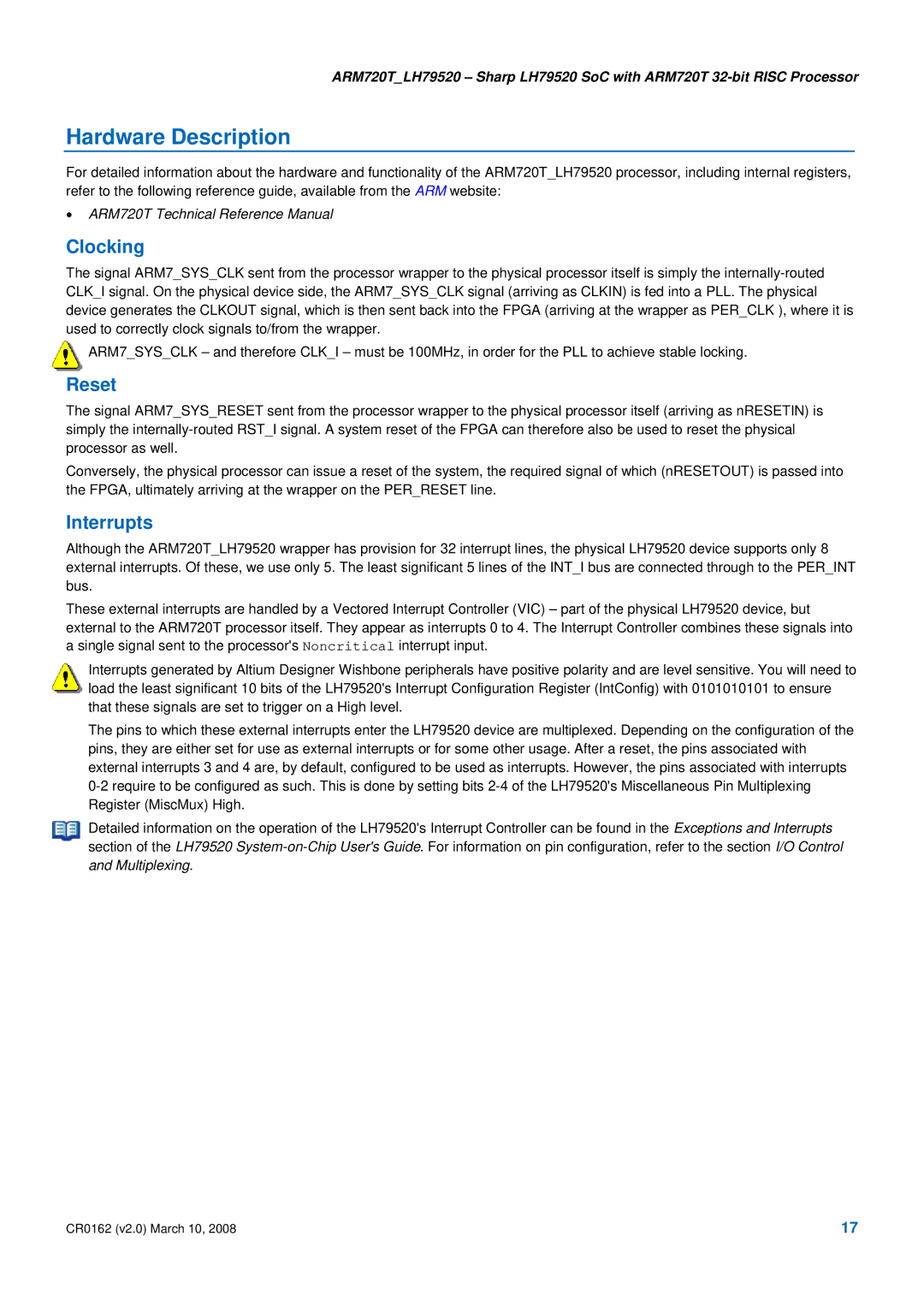
ARM720T_LH79520 – Sharp LH79520 SoC with ARM720T
Hardware Description
For detailed information about the hardware and functionality of the ARM720T_LH79520 processor, including internal registers, refer to the following reference guide, available from the ARM website:
•ARM720T Technical Reference Manual
Clocking
The signal ARM7_SYS_CLK sent from the processor wrapper to the physical processor itself is simply the
ARM7_SYS_CLK – and therefore CLK_I – must be 100MHz, in order for the PLL to achieve stable locking.
Reset
The signal ARM7_SYS_RESET sent from the processor wrapper to the physical processor itself (arriving as nRESETIN) is simply the
Conversely, the physical processor can issue a reset of the system, the required signal of which (nRESETOUT) is passed into the FPGA, ultimately arriving at the wrapper on the PER_RESET line.
Interrupts
Although the ARM720T_LH79520 wrapper has provision for 32 interrupt lines, the physical LH79520 device supports only 8 external interrupts. Of these, we use only 5. The least significant 5 lines of the INT_I bus are connected through to the PER_INT bus.
These external interrupts are handled by a Vectored Interrupt Controller (VIC) – part of the physical LH79520 device, but external to the ARM720T processor itself. They appear as interrupts 0 to 4. The Interrupt Controller combines these signals into a single signal sent to the processor's Noncritical interrupt input.
Interrupts generated by Altium Designer Wishbone peripherals have positive polarity and are level sensitive. You will need to
![]() load the least significant 10 bits of the LH79520's Interrupt Configuration Register (IntConfig) with 0101010101 to ensure that these signals are set to trigger on a High level.
load the least significant 10 bits of the LH79520's Interrupt Configuration Register (IntConfig) with 0101010101 to ensure that these signals are set to trigger on a High level.
The pins to which these external interrupts enter the LH79520 device are multiplexed. Depending on the configuration of the pins, they are either set for use as external interrupts or for some other usage. After a reset, the pins associated with external interrupts 3 and 4 are, by default, configured to be used as interrupts. However, the pins associated with interrupts
Detailed information on the operation of the LH79520's Interrupt Controller can be found in the Exceptions and Interrupts section of the LH79520
CR0162 (v2.0) March 10, 2008 | 17 |
